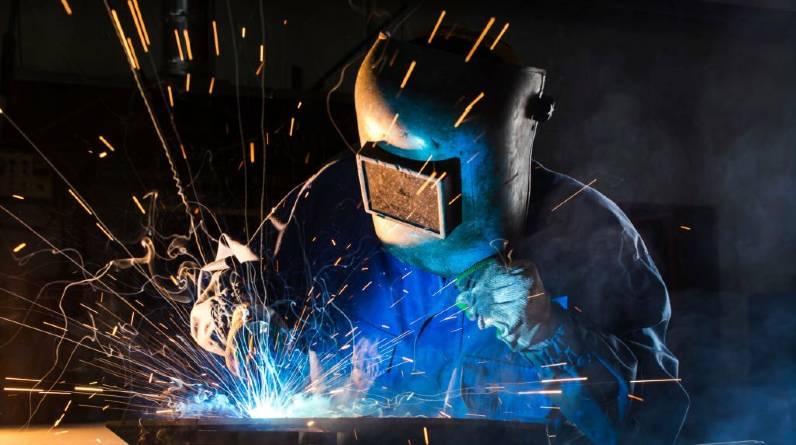
Geothermal heating and cooling systems have emerged as a sustainable and energy-efficient alternative to traditional HVAC systems. These systems harness the stable temperature of the earth to provide heating and cooling for buildings, reducing reliance on fossil fuels and minimizing greenhouse gas emissions.
At the heart of geothermal systems lies a network of underground piping that facilitates the transfer of heat between the earth and the building. The choice of piping material plays a crucial role in the performance, durability, and efficiency of geothermal systems, and high-density polyethylene (HDPE) has proven to be a superior option.
Role and benefits of HDPE piping in geothermal applications
HDPE piping has revolutionized the geothermal industry, offering a range of benefits that make it an ideal choice for underground heat exchange loops. One of the key advantages of HDPE pipes is their exceptional durability and corrosion resistance.
Geothermal systems expose pipes to constant moisture, temperature fluctuations, and potentially corrosive soil conditions. HDPE pipes, being inert and resistant to chemical degradation, can withstand these challenging environments without corroding or deteriorating over time. This durability translates into longer system life, reduced maintenance requirements, and lower lifecycle costs compared to traditional metal pipes.
Another significant benefit of HDPE pipes in geothermal applications is their superior thermal conductivity. HDPE has a lower thermal conductivity than metal pipes, which means it minimizes heat loss as the fluid circulates through the underground loops. This thermal efficiency allows for more effective heat transfer between the earth and the building, reducing energy consumption and improving the overall performance of the geothermal system.
HDPE pipes also offer excellent flexibility and ease of installation. Unlike rigid metal pipes, HDPE pipes can be easily bent and shaped to conform to the contours of the terrain, reducing the need for joints and fittings. This flexibility simplifies the installation process, minimizes the risk of leaks, and allows for longer continuous pipe runs. The lightweight nature of HDPE pipes further facilitates handling and transportation, reducing installation time and costs.
Design considerations and installation best practices
To maximize the efficiency and performance of geothermal systems using HDPE piping, proper design and installation practices are crucial. One important consideration is the selection of the appropriate HDPE pipe grade and dimensions.
Geothermal applications typically require HDPE pipes with a higher pressure rating and wall thickness to withstand the system’s operating pressures and ensure long-term reliability. Working with experienced geothermal designers and installers can help ensure that the HDPE piping system is optimized for the specific project requirements.
Proper installation techniques are equally important to the success of geothermal systems with HDPE piping. The use of heat fusion welding, such as butt fusion or electrofusion, creates strong, leak-free joints that are as reliable as the pipe itself. These fusion techniques eliminate the need for mechanical fittings and reduce the potential for leaks, ensuring the integrity of the piping system over its lifetime.
During installation, it is also crucial to follow best practices for trenching, backfilling, and grouting. The depth and spacing of the trenches, as well as the type of backfill material used, can impact the thermal performance and stability of the piping system. Properly grouting the boreholes or trenches helps ensure efficient heat transfer and prevents groundwater contamination.
Environmental impact and sustainability aspects
Geothermal systems with HDPE piping offer significant environmental benefits and contribute to the overall sustainability of buildings. By reducing reliance on fossil fuels for heating and cooling, geothermal systems minimize greenhouse gas emissions and help mitigate the impacts of climate change. The energy efficiency of geothermal systems also translates into lower operating costs and reduced strain on the electrical grid.
HDPE pipes themselves have a lower environmental impact compared to traditional metal pipes. The production of HDPE requires less energy and generates fewer greenhouse gas emissions than the manufacturing of steel or copper pipes. Additionally, HDPE pipes are recyclable at the end of their service life, contributing to the circular economy and reducing waste in the construction industry.
The durability and longevity of HDPE pipes in geothermal systems also contribute to their environmental sustainability. With a lifespan of 50 years or more, HDPE piping systems reduce the need for frequent replacements and minimize the environmental impact associated with the production and disposal of new materials.
Future advancements in geothermal piping technology
As the demand for sustainable and energy-efficient building systems grows, the geothermal industry continues to evolve and innovate. One area of advancement is the development of advanced HDPE pipe formulations with enhanced thermal conductivity and strength properties. These innovations aim to further improve the efficiency and performance of geothermal systems while maintaining the inherent benefits of HDPE, such as durability and corrosion resistance.
Another trend in geothermal piping technology is the integration of smart sensors and monitoring systems. By embedding sensors within the HDPE piping network, geothermal system operators can gather real-time data on system performance, temperature distribution, and potential leaks. This data-driven approach enables proactive maintenance, optimization of system settings, and early detection of any issues, ensuring the long-term efficiency and reliability of the geothermal system.
Research is also ongoing in the field of hybrid geothermal systems, which combine geothermal heat exchange with other renewable energy technologies, such as solar thermal or heat recovery systems. HDPE piping plays a crucial role in these hybrid systems, facilitating the integration and efficient transfer of heat between different components.
HDPE piping has revolutionized the geothermal industry, offering a durable, efficient, and environmentally friendly solution for underground heat exchange loops. The benefits of HDPE pipes, including exceptional corrosion resistance, thermal efficiency, flexibility, and ease of installation, make them an ideal choice for geothermal applications.
Proper design and installation practices, such as selecting the appropriate HDPE pipe grade, using heat fusion welding techniques, and following best practices for trenching and grouting, are essential to maximizing the performance and longevity of geothermal systems with HDPE piping.
The environmental benefits of geothermal systems with HDPE piping are significant, contributing to reduced greenhouse gas emissions, lower energy consumption, and overall building sustainability. As the world seeks to transition to cleaner, more efficient energy solutions, the adoption of geothermal systems with HDPE piping will play an increasingly important role.
Looking to the future, advancements in HDPE pipe formulations, smart sensor integration, and hybrid system designs will further enhance the capabilities and efficiency of geothermal piping technology. By embracing these innovations, the geothermal industry can continue to provide sustainable, reliable, and cost-effective heating and cooling solutions for buildings worldwide.
As the demand for sustainable and energy-efficient building systems grows, the use of HDPE piping in geothermal applications will undoubtedly expand. By investing in this proven technology and implementing best practices in design and installation, building owners, developers, and HVAC professionals can harness the power of geothermal energy while maximizing efficiency, durability, and environmental sustainability.





